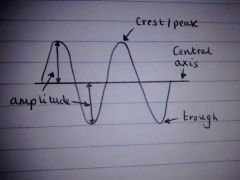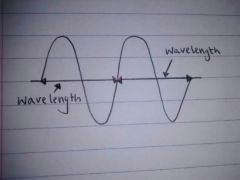![]()
![]()
![]()
Use LEFT and RIGHT arrow keys to navigate between flashcards;
Use UP and DOWN arrow keys to flip the card;
H to show hint;
A reads text to speech;
10 Cards in this Set
- Front
- Back
|
What are waves made from? |
Waves are made from particles vibrating. |
|
|
What are the two types of waves? |
The two types of waves are transverse and longitudinal. |
|
|
In which direction do the particles vibrate in a longitudinal wave? |
In the same direction of the wave. |
|
|
In which direction do the particles vibrate in a transverse wave? |
At right angles to the direction of the wave. |
|
|
Give an example of a transverse wave. |
Waves on a rope, water waves, light waves and all members of the electromagnetic spectrum are transverse waves. |
|
|
Give an example of a longitudinal wave. |
Sound is a longitudinal wave. |
|
|
What is the frequency of a wave? |
Frequency (f) is the number of waves produced (passing a point) each second. It is measured in hertz (Hz).
f=N/t Where N is the number of waves and t is the time. |
|
|
What is the wavespeed of a wave? |
Wavespeed (v) is the distance travelled by a wave in one second. It is measured in metres per second (m/s). v=d/t Where d is the distance and t is the time. |
|
|
What is the the amplitude of a wave? |

The amplitude is the maximum disturbance from the central axis (distance from central axis to crest/trough). It is measured in metres (m). |
|
|
What is the wave length of a wave? |

Wavelength (λ, lambda) is the distance from one point on a wave to the same point on the next wave. It is measured in metres (m). |

